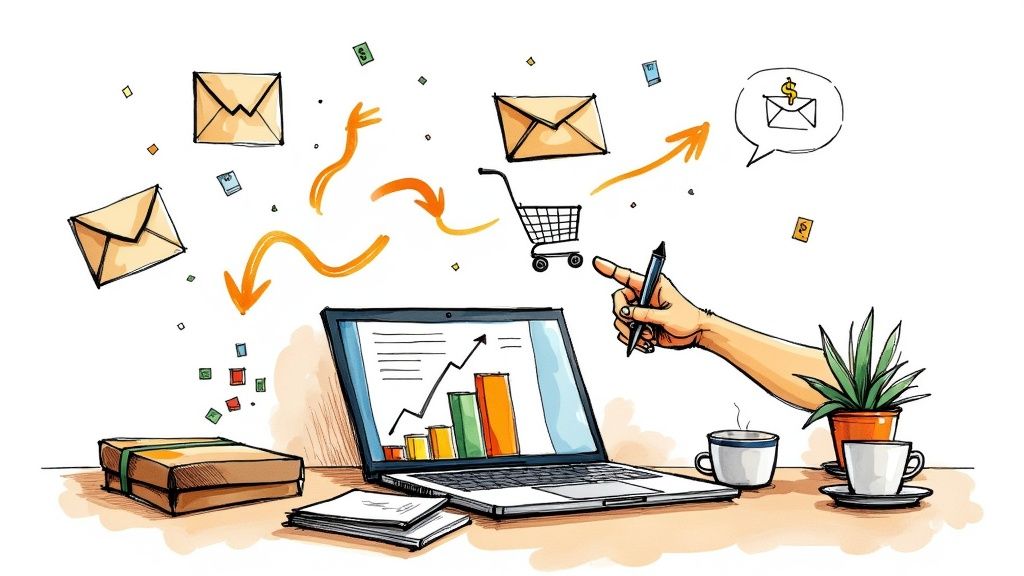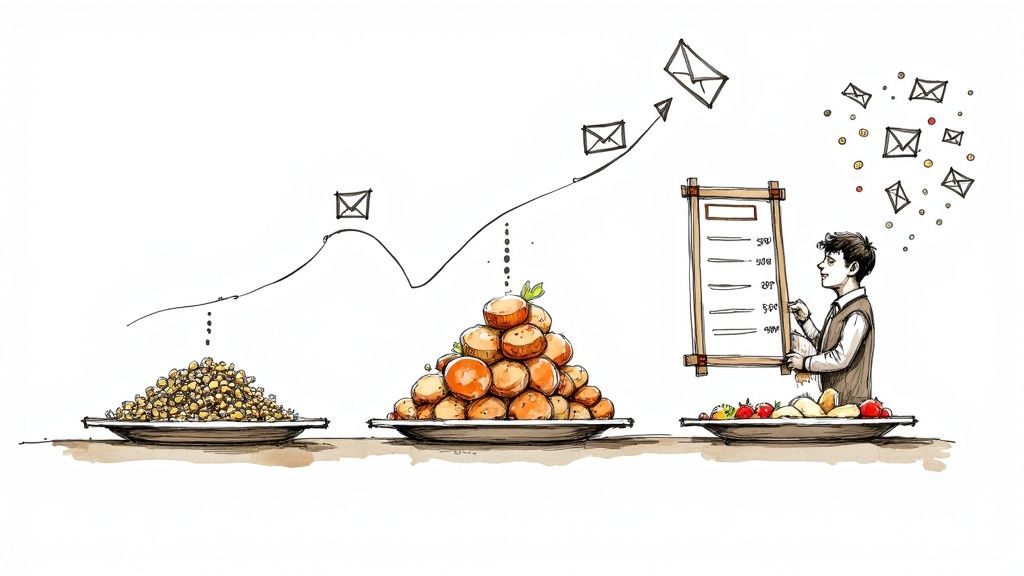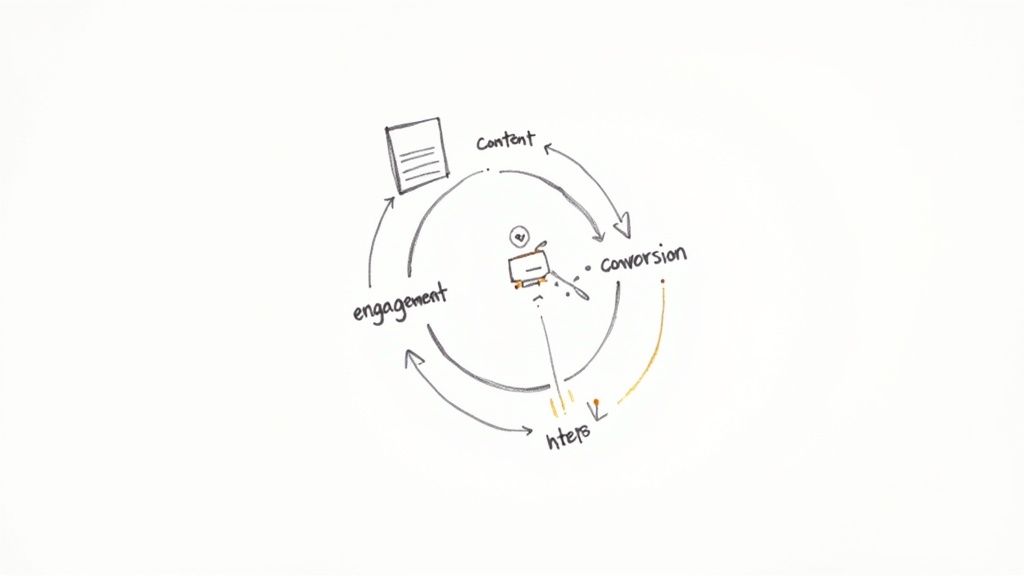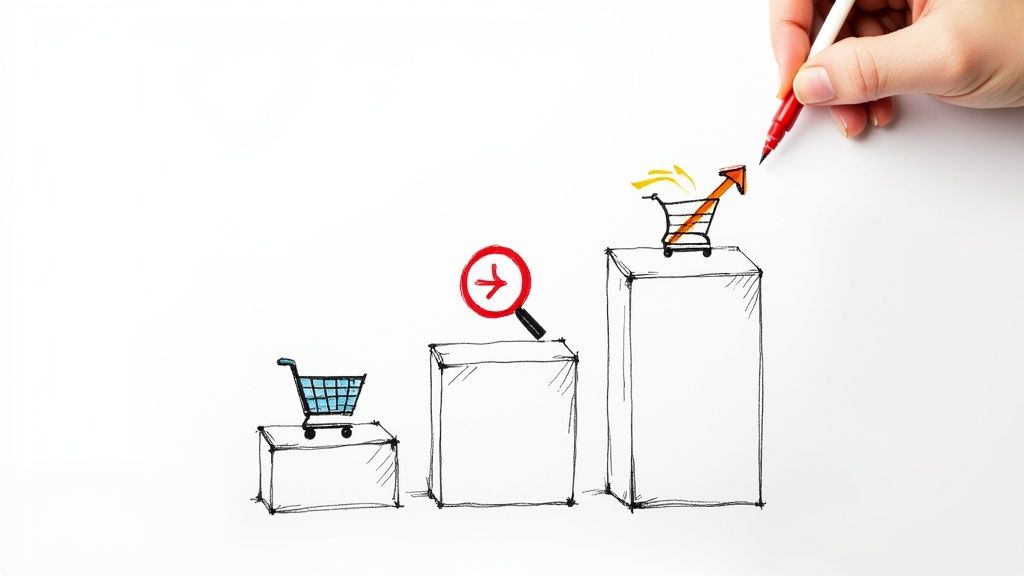Ecommerce Customer Retention: Proven Tips to Boost Profits
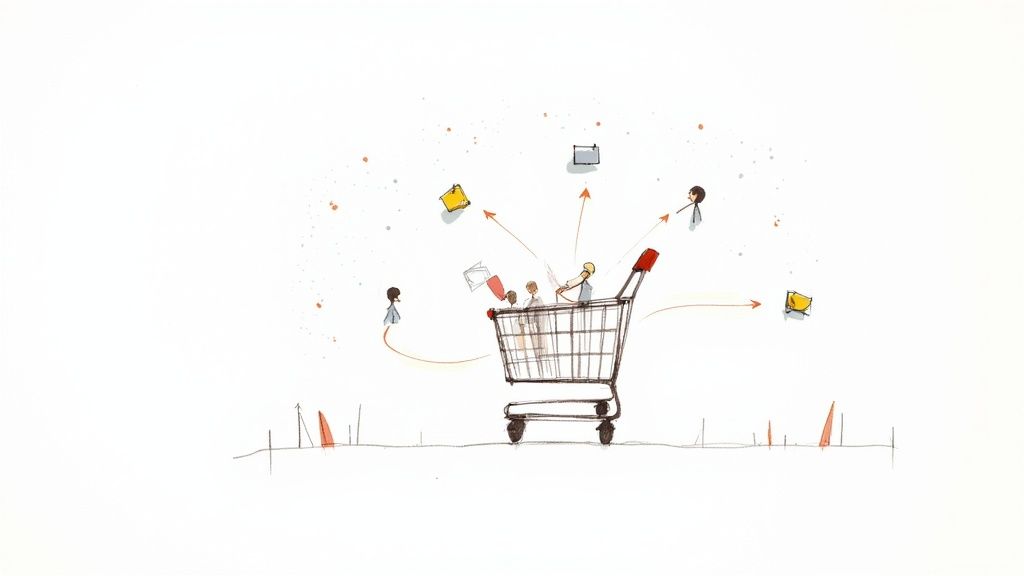
9 mins
5/28/2025
Joe Ervin
- ecommerce customer retention
- customer loyalty
- retention strategies
- repeat customers
- profit growth
Why Keeping Customers Beats Finding New Ones
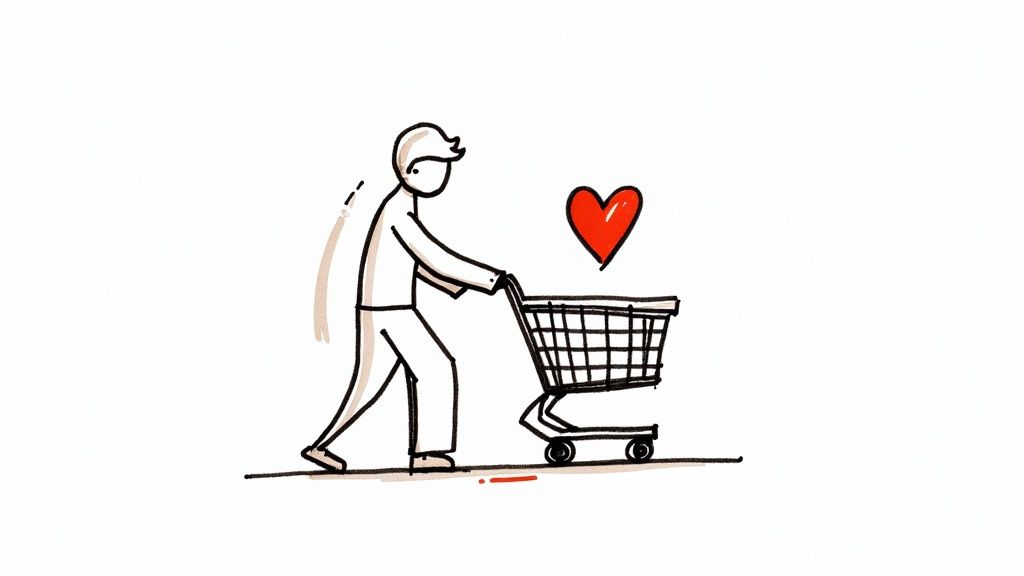
Acquiring new customers requires a significant investment. Focusing on retaining existing customers offers a more strategic use of your marketing resources. After all, you've already persuaded them to buy from you once. It's significantly simpler to sell to someone who's already familiar with your brand and trusts you.
The Rising Cost of New Customers
The expense of acquiring new customers continues to climb. Over the last decade, this cost has surged by a staggering 222%, reaching approximately $29 per customer. This emphasizes the critical importance of ecommerce customer retention. Historically, retaining online customers has proven challenging. However, for astute businesses, this presents a valuable opportunity. Find more detailed statistics here.
The Benefits of Repeat Buyers
Existing customers are invaluable. They're already acquainted with your products, leading to quicker purchasing decisions. They also tend to spend more per order and purchase more frequently. Furthermore, they're generally easier to satisfy. You don't need to expend as much effort convincing them of your value proposition since they already appreciate your offerings.
Building a Stable Business Through Retention
Prioritizing customer retention strengthens your business foundation. You generate increased revenue with less effort, maximizing the impact of your marketing spend. This creates a dependable revenue stream, contributing to improved profitability and reduced financial uncertainty. Successful ecommerce brands understand this principle. They place customer retention at the forefront, fostering robust relationships with their customers. This approach fuels their growth and helps them maintain a competitive edge.
How Small Changes Create Big Profit Jumps
Keeping just 5% more customers can boost profits by a whopping 25% to 95%. It might seem small, but even minor improvements in ecommerce customer retention translate to significant profit gains. Why is this the case? It all boils down to the value of repeat customers.
Repeat customers are more likely to spend more per order and buy more frequently. They're already familiar with your brand, leading to quicker purchase decisions. Furthermore, they often become brand advocates, referring new customers organically – a win-win for your business.
Why Repeat Customers are Your Gold Mine
Acquiring new customers is like an uphill battle, requiring substantial effort and investment in marketing and advertising. However, retaining existing customers is a smoother ride. It's less resource-intensive and yields better returns. Repeat customers are already familiar with your store and require less convincing to make a purchase. This familiarity translates into lower customer service costs and increased efficiency.
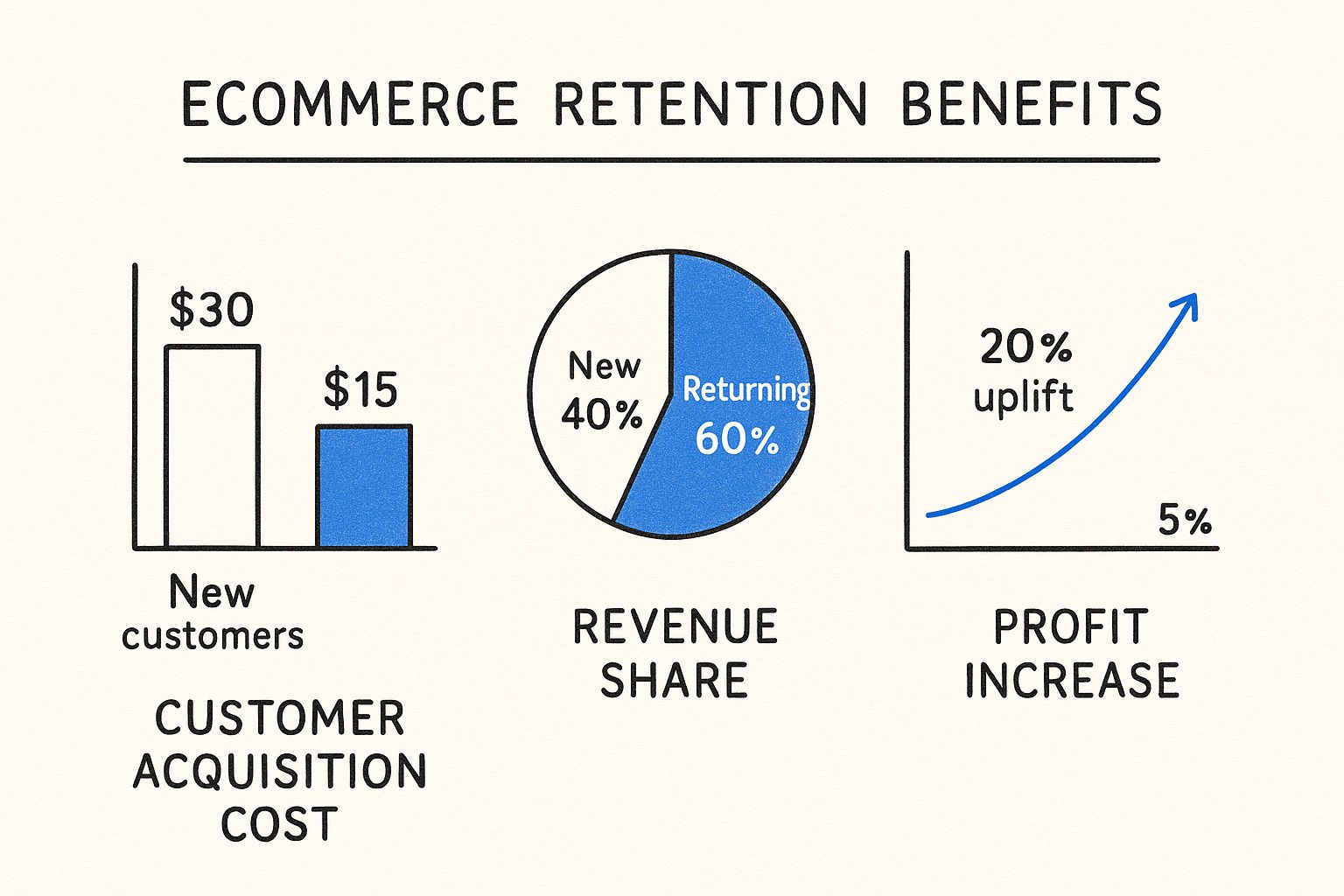
This infographic visually represents the positive impact of customer retention on essential metrics like acquisition cost, revenue share, and profit growth. Returning customers contribute a larger portion of revenue while requiring lower acquisition costs. Even a small uptick in your retention rate – say, 5% – can result in a profit boost of 25% to 95%. Find more detailed statistics here.
The table below, "Retention Impact on Profit Growth," further illustrates this point, demonstrating how varied retention rate improvements translate into profit increases across different business types.
| Retention Increase | Profit Boost Range | Business Type Example |
|---|---|---|
| 5% | 25% - 95% | Online Clothing Retailer |
| 10% | 50% - 150% | Subscription Box Service |
| 15% | 75% - 200% | Online Pet Supply Store |
As this table clearly shows, even small increases in customer retention can dramatically improve profitability, regardless of the specific industry. Focusing on retention strategies is a smart investment for sustainable growth.
How Smart Brands Use Retention Data
Successful ecommerce brands don't just guess; they actively monitor their retention rates. They analyze data to identify which products resonate most with their loyal customers and predict potential churn. These insights inform strategic decisions related to marketing campaigns, product development, and customer service enhancements. Understanding these metrics empowers businesses to plan more effectively and maximize their profitability.
Where Ecommerce Stands in Customer Retention
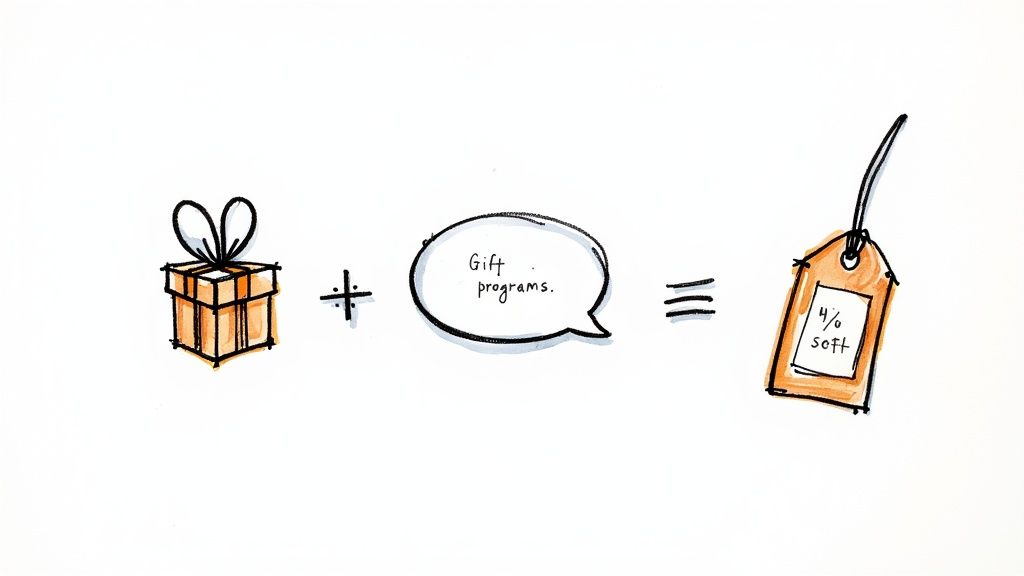
Ecommerce businesses face a significant challenge: customer retention. The average online store retains approximately 38% of its customers. This pales in comparison to other industries.
For instance, media companies and professional services boast a much higher retention rate, around 84%. So, what makes it harder for online stores to keep their customers coming back?
Why Online Stores Struggle
Several factors contribute to this lower retention rate. One key issue is the inability of online shoppers to physically interact with products before purchasing. This can lead to uncertainty and buyer's remorse.
Another hurdle is the intensely competitive nature of online retail. With just a click, shoppers can easily jump to a competitor's site. Price comparison is also effortless online, allowing customers to quickly find better deals elsewhere.
Finally, building personal connections with customers online is a real challenge. The absence of face-to-face interaction can make it harder to establish rapport and foster loyalty.
The Huge Opportunity in Ecommerce
Despite these difficulties, the future of ecommerce remains bright. Global ecommerce sales are expected to reach a staggering $6.86 trillion in 2025, marking an 8.37% increase from the previous year. Find more detailed statistics here.
This growth signifies a huge potential for profit. Even minor improvements in ecommerce customer retention can translate into substantial revenue gains. The businesses that crack the code of customer loyalty will be well-positioned for success.
How the Best Ecommerce Brands Win
Leading ecommerce brands understand the importance of creating exceptional online experiences. They use data to personalize interactions, offering a level of service reminiscent of a friendly, familiar store clerk.
These companies prioritize efficient problem-solving and cultivate communities around their products. They streamline the purchasing process, making it both easy and enjoyable. By doing so, they eliminate the need for customers to look elsewhere.
They understand that loyalty is earned one happy customer at a time.
Simple Tactics That Work Right Away
Want to boost your ecommerce customer retention this month? Start with these simple, proven tactics. These changes are cost-effective and can make a big difference quickly.
Improve Your Email Communication
First, improve your email strategy. Forget boring order confirmations! Add a personal touch. A simple "Thank you for your order!" goes a long way. Follow up after delivery. Ask customers if they are happy with their purchase. Send helpful tips about using their new item. These small touches demonstrate care and show you're not just focused on the sale. You might be interested in: How to master your ecommerce email flows.
Simplify Your Return Process
Next, make returns easy. A difficult return process drives customers away. A simple one builds trust. Customers feel more confident placing larger orders when returns are hassle-free.
Respond Quickly to Customer Service Requests
Respond to customer service requests within two hours. Speed builds trust and shows customers you value their time. Quick replies can turn a negative experience into a positive one.
Use Customer Feedback
Ask for feedback, then use it to improve. When customers see you implementing changes based on their input, they feel valued and like they're part of your community.
Create Targeted Email Sequences
Finally, create targeted email sequences for different customer segments. New customers need onboarding and guidance. Returning customers appreciate special offers. Long-term customers want to feel like VIPs. Each group has unique needs, so cater your communication accordingly.
Building Loyalty Programs That Actually Work
Many loyalty programs ultimately fail. They're often too complicated for customers to understand or offer rewards that simply aren't appealing. The most successful programs are straightforward and provide value from the very beginning, encouraging customers to sign up and quickly see the benefits.
Points for Purchases and More
A simple starting point is offering points for purchases. This is a transparent system that customers easily grasp. However, don't limit your program to just purchases. Award points for product reviews, customer referrals, and social media shares. Rewarding actions that contribute to business growth is a smart strategy. Learn more about growing your business with content in this article about How to master your ecommerce content marketing.
Rewards Customers Want
Ensure your rewards are desirable. Discounts are always effective, but free shipping can be even more enticing. Early access to new products generates excitement, and personalized birthday rewards add a special touch. The key is speed; customers should experience the program's value quickly, not after significant spending.
Tiers That Encourage Spending
Implement a tiered system with easily attainable levels. For example, a customer could reach the Bronze level after one purchase, Silver after three, and Gold after ten. Each tier should offer distinct and noticeable benefits. Track reward usage to identify what resonates most with your customers and concentrate on those popular options.
Keep It Simple
Steer clear of convoluted rules. Simple programs attract higher participation and foster stronger customer loyalty. This leads to increased customer satisfaction and contributes to business growth.
To further illustrate the differences between loyalty program types, let's take a look at the following comparison:
Loyalty Program Types Comparison
This table compares different loyalty program structures, highlighting setup costs, customer engagement levels, and potential ROI.
| Program Type | Setup Cost | Customer Engagement | Average ROI |
|---|---|---|---|
| Points-Based | Low | Medium | Medium |
| Tiered | Medium | High | High |
| Value-Based | High | High | Very High |
| Partnership | Medium | Medium | Medium |
As you can see, while a points-based system is the easiest to implement, tiered programs and partnership programs tend to drive higher engagement and ROI. Value-based programs, though requiring the highest setup cost, have the potential to generate the highest return and deepest customer loyalty. Choosing the right structure for your business depends on your specific resources and goals.
Using Data to Predict and Prevent Customer Loss

Data can offer valuable insights into customer behavior, helping you identify potential churn before it happens. This proactive approach allows you to implement strategies to retain valuable customers. So, which data points should you be monitoring?
- Order Frequency: Has the rate at which a customer makes purchases decreased?
- Order Size: Are customers purchasing fewer items or opting for lower-priced products?
- Time Between Purchases: Is the interval between orders lengthening?
- Customer Service Contacts: Is there a noticeable increase in the customer's contact with your support team?
These subtle shifts in behavior can often indicate underlying customer dissatisfaction.
Act Fast to Keep Customers
When these warning signs appear, swift action is crucial. A small gesture can go a long way in retaining a customer. Consider reaching out personally through a tailored email, offering a special discount, or providing helpful tips related to their purchases. Sometimes, simply asking "How are you doing?" can strengthen the customer relationship.
Automating these actions can significantly improve efficiency. Tools like Google Analytics and your chosen email platform can track customer activity. Setting up automated alerts will notify you when a valuable customer exhibits signs of leaving.
Learn from Your Best Customers
Your most loyal customers provide a blueprint for success. Analyze their behavior patterns. What is their purchase frequency? What types of products do they buy? Use this data to inform your ecommerce customer retention strategies. Consider implementing a Marketing Automation strategy for your ecommerce platform. By understanding what works for your best customers, you can guide other customers along the same path.
Focus on Your Most Valuable Customers
Not all customers contribute equally to your bottom line. Some customers have a high Customer Lifetime Value (CLV), meaning they will spend more money with your business over time. Prioritize these high-CLV customers. They generate the greatest return on your retention efforts and deserve your focused attention.
It's important to acknowledge that you won't be able to retain every customer. Some will inevitably leave, regardless of your efforts. That's perfectly normal. Concentrate on retaining the customers who are worth the investment – the ones you can realistically save. This focused approach is key to maximizing your profits.
Your Step-by-Step 30-Day Retention Action Plan
Ready to boost your sales by holding onto more customers? This simple 30-day plan will help you get started.
Week 1: Check Your Customer Experience
First, take a close look at how customers experience your store. Examine these three key areas:
- Emails: Do your order confirmations and follow-up emails have a friendly tone? Are they providing helpful information?
- Returns: Is your return policy easy to understand and use? A clear and straightforward policy can greatly improve customer satisfaction.
- Customer Service: How quickly are you responding to customer questions? Prompt and helpful service can build loyalty.
Address any issues you uncover in these areas.
Week 2: Track Key Metrics
Next, begin tracking two crucial numbers:
- Repeat Purchase Rate: How many customers are making a second purchase? This metric reveals the effectiveness of your retention efforts.
- Customer Lifetime Value: How much money does each customer spend over their relationship with your store? Understanding this value helps prioritize your retention strategies.
These numbers provide valuable insights into how effectively you’re retaining customers.
Week 3: Try One New Tactic
Now, implement one simple retention tactic. Here are two ideas:
- Post-Purchase Emails: Send helpful tips related to their purchase or special offers after a customer buys something. This encourages future purchases.
- Feedback Survey: Request customer feedback on how you can improve their experience. Use tools like SurveyMonkey to gather valuable insights.
Week 4: Check Your Results
Finally, analyze the outcomes of your efforts:
- What worked well? Identify successful strategies to continue and refine.
- What didn't work? Learn from what didn't resonate with your customers to avoid repeating ineffective tactics.
- What should you try next? Based on your findings, plan your next steps for continuous improvement.
Keep Making Small Improvements
After 30 days, you'll have a solid foundation. Each month, experiment with a new retention tactic. Test each change to gauge its effectiveness. Keep the changes that help you retain more customers. Remember, building customer loyalty takes time! Small changes accumulate to generate significant results. Your customers (and your bottom line) will thank you!
